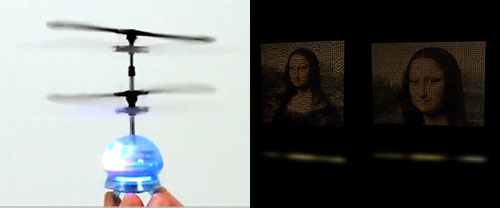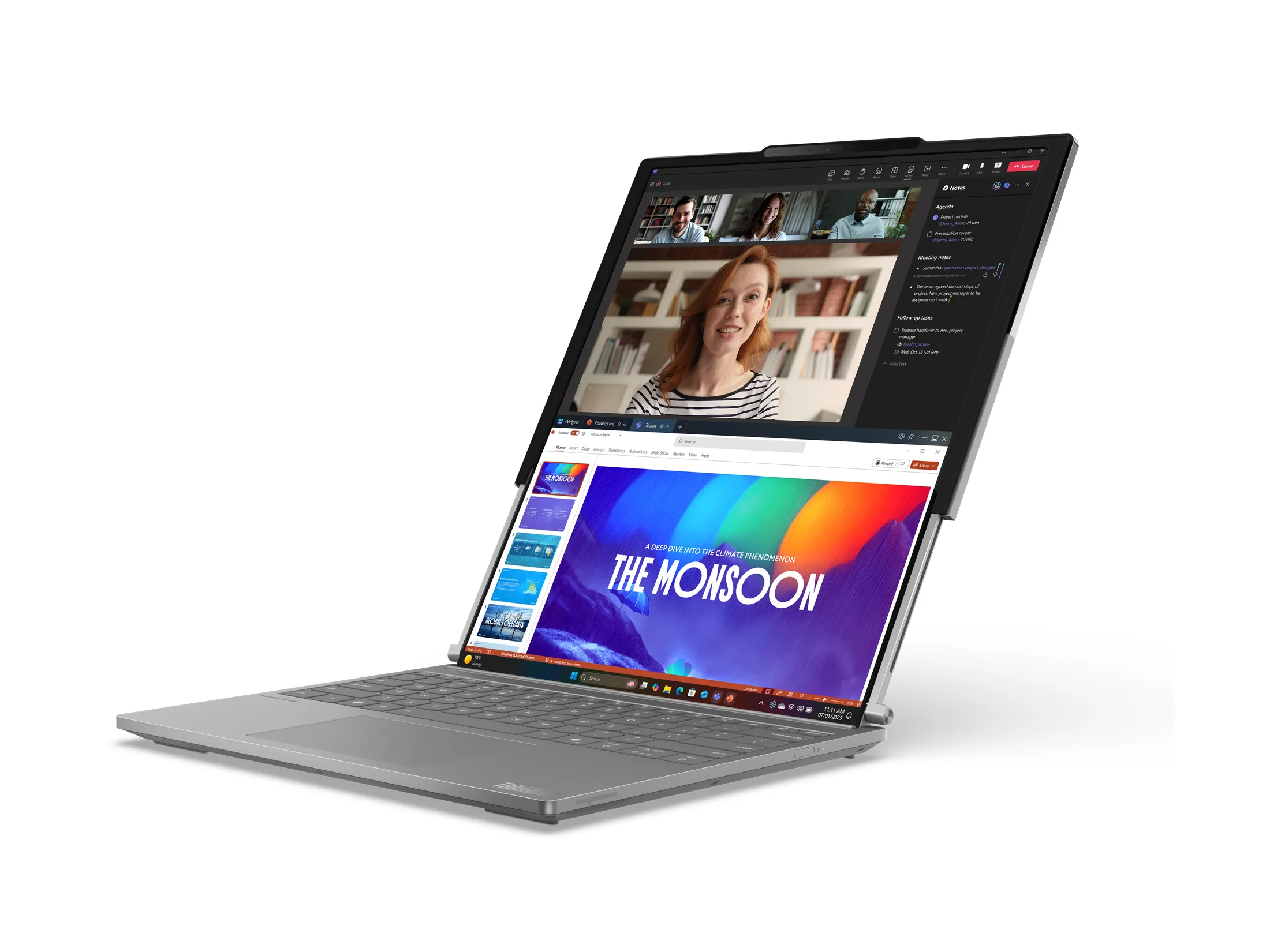Update- Apparently Flyfire is a secret still, since it looks like MIT has pulled the video, plus the website, just an hour or so after we posted this. Weird…

By Evan Ackerman
The problem with true three dimensional displays (displays that you can walk around) is that they require pixels to be floating in space. This has been done with lasers and plasma, but such technologies are super expensive and limited in many ways. MIT’s SENSEable City Laboratory in collaboration with ARES Lab (Aerospace Robotics and Embedded Systems Laboratory) has hit upon the idea of creating huge free form three dimensional displays out of individual “smart pixels” made up of micro helicopters carrying LEDs:
Gigantic 3D displays made up of swarms of micro helicopters that can be released into any open space… How awesome is that? More, after the jump.
We’ve talked about the benefits of swarm robotics before over on BotJunkie: it’s relatively cheap because the individual robots are simple, if any one robot breaks it’s easy to replace, and it’s easily scalable since you can just toss more bots into the mix. You can even use swarms to compensate for things like batteries: if you initially launch your robots in waves, you can have a whole other group of standby robots that dynamically replace the performing robots as their batteries run out, flying up with their LEDs off to switch places without anybody noticing.
The tricky part, of course, is getting everything to work together. MIT has big plans for the system, though…
The Flyfire canvas can transform itself from one shape to another or morph a two-dimensional photographic image into an articulated shape. The pixels are physically engaged in transitioning images from one state to another, which allows the Flyfire canvas to demonstrate a spatially animated viewing experience. Flyfire serves as an initial step to explore and imagine the possibilities of this free-form display: a swarm of pixels in a space.
You could even play an HD movie on system… Let me see, to play a movie in 1080p (trying to get it to do 1080i with half the number of bots would be pretty interesting but probably impossible, unless you could get them to do barrel rolls at 60 Hz or something to form the interlacing) you’d need over 2 million micro copters to form the base screen, plus however many more are required to swap out for recharging. Fun to think about, but maybe it would be better to just stick with standard def, since you’d only need about 350,000 bots.
While the video is a rendering, the robots are real enough, and hopefully we can expect to see some live demos of the entire system sometime soon.










